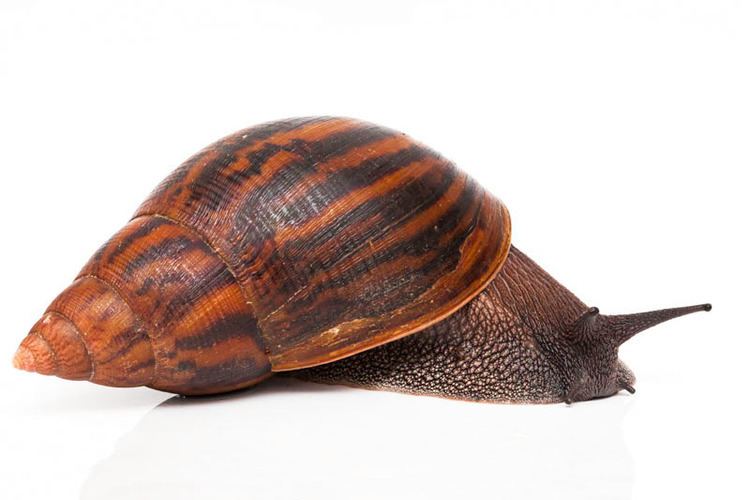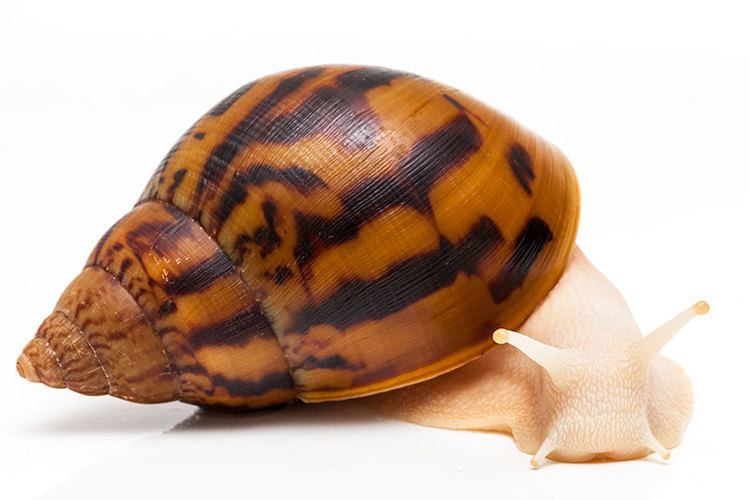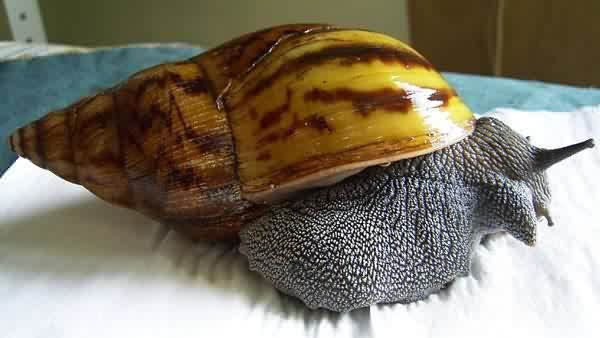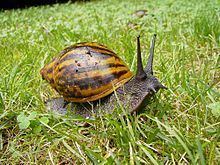Subfamily Achatininae Rank Species | Genus Achatina Higher classification Achatina | |
Similar Achatina, Archachatina marginata, Archachatina, Achatina reticulata, Gastropods | ||
Achatina achatina tiger snail eating
Achatina achatina, common name the African giant snail, also known as the giant tiger land snail, is a species of very large, air-breathing land snail, a terrestrial pulmonate gastropod mollusk in the family Achatinidae. The name "Achatina" is from "achates", Greek for agate.
Contents
- Achatina achatina tiger snail eating
- Achatina achatina bath 4x speed
- Distribution
- Description
- Ecology
- References

Achatina achatina bath 4x speed
Distribution

The species is believed to be native to West Africa, within 160 to 300 kilometres of the coasts of Sierra Leone, Liberia, Ivory Coast, Togo, Benin, Ghana, and Nigeria.

Achatina achatina is routinely confiscated by quarantine authorities at United States airports, especially Baltimore, Dulles, John F. Kennedy International Airport in New York, and San Francisco. These very large snails are kept as pets in the Western world, where owners prize their large size, distinctive markings, and rarity.

It is considered a potentially serious pest, an invasive species that could adversely affect agriculture, natural ecosystems, human health or commerce. The snail has become established in some Caribbean islands, such as Barbados. It has been suggested that this species be given top national quarantine significance in the United States. The snails have already established themselves in the wild in Florida, where they are considered a pest.
Description
The shells of these snails often grow to a length of 18 centimetres (7.1 in) with a diameter of 9 centimetres (3.5 in). Certain examples have been surveyed in the wild at 30×15 cm, making them the largest extant land snail species known.
Ecology
Like almost all pulmonate gastropods, these snails are hermaphrodites, having male and female sex organs. Each snail lays up to twelve hundred eggs per year. Achatina achatina is an important source of animal protein for West African forest-dwelling ethnic groups, and commercial farming of these snails holds great promise.
This species' substantial size and potential for rapid population growth can make the snail a serious pest when introduced to non-native ecosystems. The population size of this species can be curtailed through disease caused by the bacterium Aeromonas liquefaciens but it often has no other natural enemies.
